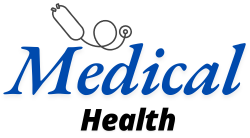HIIT, high-intensity interval training, it ain’t rocket science, see? It’s like, you go hard, then you chill, then you go hard again. Think of it like a cat chasing a mouse then taking a nap. Forget those long boring workouts, this is about pushing like you are late for happy hour, then catching your breath, turns out it works better. Studies show it burns, get this, 30% more calories than your old slowpoke stuff, and that’s just the start. It keeps burning after you’re done, like a furnace. They call it afterburn, or EPOC if you wanna be fancy, your body’s just working to fix itself, so it’s burning more juice, like it’s got a tab at the local bar. You are not just burning calories at the gym; you’re torching fat while you’re doing your laundry, the Journal of Obesity backs this up, says it gets rid of that bad fat, the stuff around your guts, makes you healthier, it’s a good thing. The thing about HIIT is how it’s set up: a warm up, like getting your car ready for a race, then you go hard, like you’re running from a bear, then you recover, like you just finished a good meal, and then cool down, like you are walking back from the bar, all simple. The intervals, they are not random. There is this thing, a 1 to 1 ratio, like, 30 seconds sprinting then 30 seconds walking, but you can change it, longer rests for beginners, shorter for pros. It’s not just for fat though, your heart gets a workout, like it’s lifting weights, gets stronger, pumps better, and that means more juice for you, you’ll run faster, feel better, not just in the gym but in life too, like you are not out of breath after walking a few blocks. And it keeps your muscles, like they are having a party, so you don’t lose them while losing fat, more muscle means more burning, even while you are asleep. It helps with your sugar, too, so you don’t get the diabetes, it’s like having an extra shot of insulin, all of it makes you healthier and fitter. And the best part is, it’s fast, 20 to 30 minutes, that’s all you need. It fits even if you’re busy, you can do it at home, at the park, wherever, when you are at a hotel, that flexibility is it’s strength. It’s not just saving time it is getting more for less, burn fat, get strong, better heart, better you.
What is High-Intensity Interval Training?
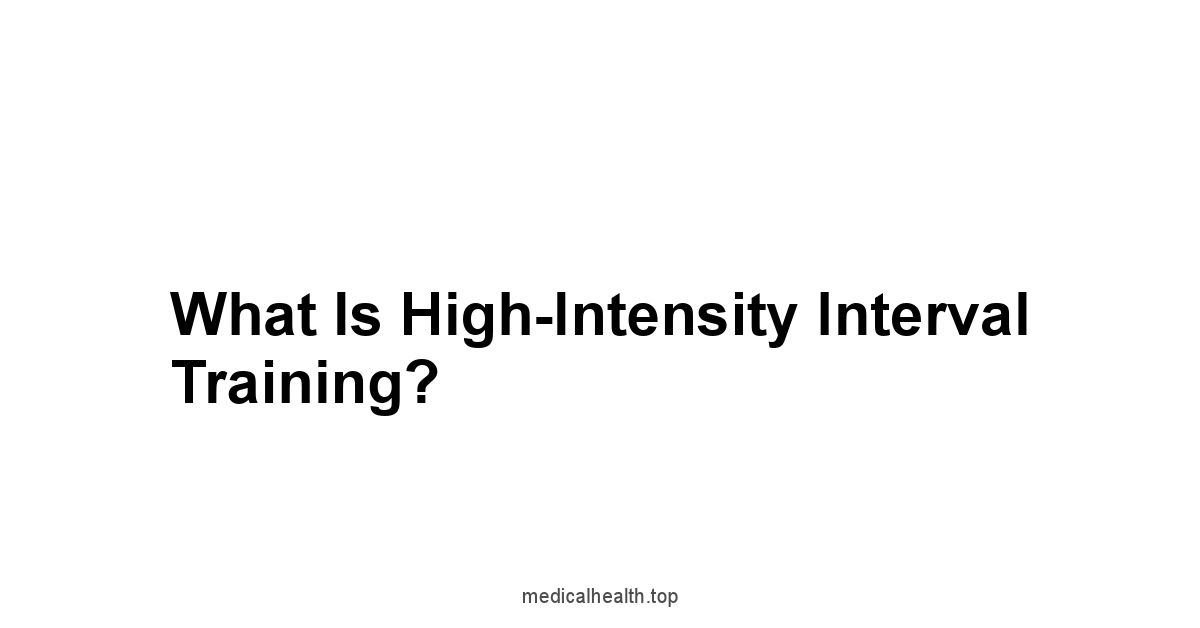
High-intensity interval training, or HIIT, is a way of working out. It is not complicated. You push hard for a short time, then you rest. Then you do it again. This is the basic idea.
It’s about bursts of effort, followed by a chance to catch your breath. Think of it like a sprint, then a walk, repeated. It’s simple, but it works. It can be a tough workout, but it’s over quickly.
HIIT is not about long, slow work. It’s about short, intense periods. You are not running a marathon.
You are doing short sprints with recovery in between. It is a focused way of training.
The focus is on pushing your body to the limit for a short time, then giving it a break. It’s a cycle of work and rest.
And this is the thing that makes HIIT different from other kinds of exercise.
The Core Concept of HIIT
The core of HIIT is the contrast between high intensity and rest. It’s a dance between pushing hard and recovery. It is not steady-state exercise. It is about changes in pace and intensity. You’re not jogging at the same speed for an hour. You are sprinting, then walking. It’s like a stop-and-go approach.
- High Intensity: This is where you go all out. You’re moving fast, pushing your body hard. Think of sprinting, jumping, or heavy lifting. It’s about effort.
- Interval: This is the period of activity. It’s short. It might be 20 seconds or a minute. It depends on the workout.
- Rest or Low Intensity: After the hard work, you get a break. You might stop completely, or you might walk. The goal is to let your heart rate come down.
- Repeat: The key is repetition. You do the high-intensity work and rest over and over. This cycle is what defines HIIT.
HIIT is about using this method to get results. It’s about efficiency. You work hard, then you rest. You repeat this pattern.
This is the main idea behind the method, and this is the way it gets the job done.
Work and Rest Intervals Defined
The work and rest intervals in HIIT are not random. They are structured to get the best results. The work interval is the period of high effort. The rest interval is the time to recover. The balance between the two is crucial. It determines the intensity of the workout. It is a system.
| Interval Type | Description | Example |
|---|---|---|
| Work Interval | Period of high-intensity activity | 30 seconds of sprinting |
| Rest Interval | Period of low-intensity activity or complete rest | 30 seconds of walking |
- Work Interval: This could be anything that gets your heart rate up. It might be sprinting, cycling, or jumping jacks. The key is to work as hard as you can during this period. This could range from 20 seconds to a full minute.
- Example: Sprinting for 30 seconds is a standard work interval for many HIIT workouts.
- Rest Interval: This is when you recover. It might be active recovery, like slow walking, or complete rest, like standing still. The rest interval is as important as the work interval. It allows your body to recover enough to push hard again. This could range from 10 seconds to a full minute
- Example: Walking for 30 seconds to catch your breath.
- Ratio: The ratio between work and rest varies. Common ratios include 1:1 equal work and rest or 2:1 work twice as long as rest. These ratios will vary depending on the workout and the goal.
- Duration: The length of the intervals depends on your fitness level and the type of exercise. A beginner might start with shorter work intervals and longer rest intervals. An experienced athlete might do the opposite.
The work and rest intervals are the backbone of HIIT.
They determine how hard you push and how much you recover. The right balance makes HIIT effective.
HIIT Workout Structure
A HIIT workout is more than just work and rest. It has a structure.
It includes a warm-up, the high-intensity intervals, and a cool-down.
This structure is important for safety and effectiveness.
It’s like building a house, you need a solid foundation.
- Warm-up: Before you start, you need to get your body ready. This is the purpose of the warm-up. It prepares your muscles for the work ahead. It increases blood flow and reduces the risk of injury.
- Examples: Light cardio, like jogging, and dynamic stretches, such as arm circles and leg swings, are suitable for warming up.
- Duration: Typically lasts 5-10 minutes. The goal is to gently raise your heart rate and loosen your muscles
- High-Intensity Intervals: This is the core of the workout. You push hard for a short time, then rest. You repeat this cycle several times. This is where you get your body working.
- Example: 30 seconds of sprinting followed by 30 seconds of walking, repeated 10 times.
- Rounds: Usually lasts 15-30 minutes, but can be shorter or longer, depending on fitness level and workout goals
- Cool-down: After the hard work, you need to let your body recover. The cool-down brings your heart rate back to normal. It helps prevent muscle soreness.
- Examples: Light cardio, like a slow walk, and static stretches, like holding a hamstring stretch, are good for cooling down.
- Duration: Usually 5-10 minutes. The goal is to gently bring your body back to a resting state
The structure of a HIIT workout is simple, but it is essential. It includes preparation, work, and recovery.
The warm-up prepares your body, the intervals challenge it, and the cool-down brings it back down.
The structure makes the workout effective and safer.
HIIT Burns Calories Effectively
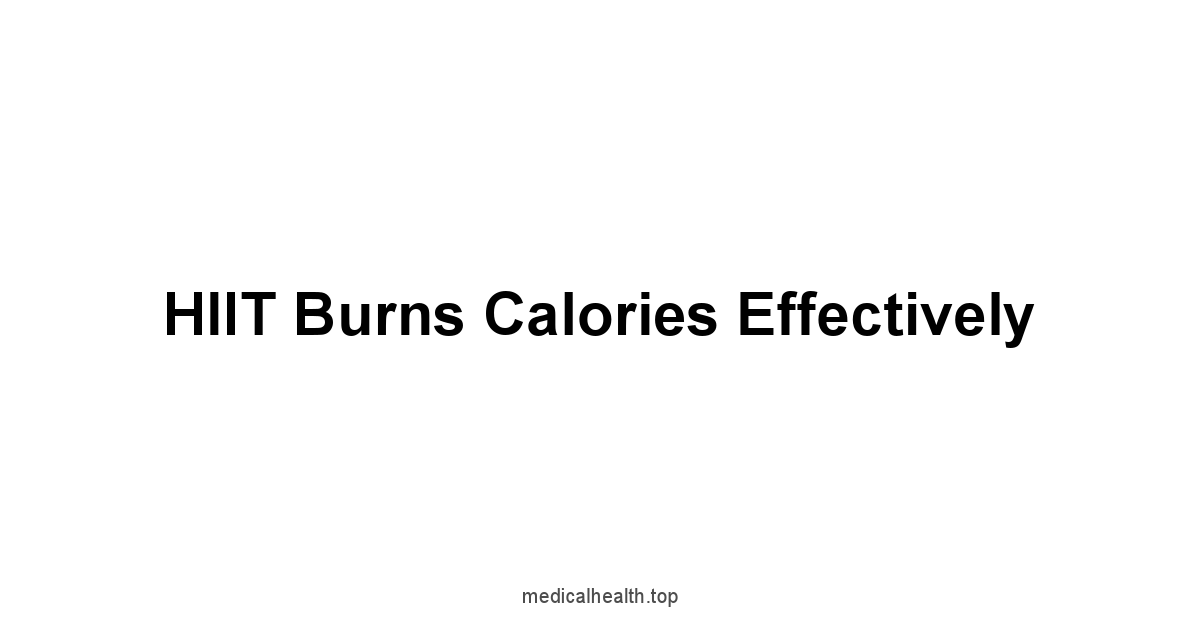
HIIT is a way to burn calories fast. It’s not a slow burn. It’s a high-intensity blaze. It can burn a lot of calories in a short time. It’s a quick way to see results. The intensity makes the difference.
It’s not about putting in the hours, it’s about working hard when you do work out.
This type of training also keeps burning calories long after the workout is done. It’s called the afterburn effect.
It’s like your body continues to work hard even after you stop.
This makes HIIT a highly efficient way to manage weight.
It’s not just about the calories burned during exercise, it’s about the extended calorie burn afterwards.
Post-Exercise Calorie Burn
HIIT does not stop burning calories when you stop exercising.
The post-exercise calorie burn, also known as the afterburn effect or excess post-exercise oxygen consumption EPOC, is a significant benefit.
This is because during HIIT, your body works so hard that it takes time to return to its resting state.
It is not just the effort, but what follows that counts.
- EPOC Explained: After a HIIT workout, your body needs more oxygen to recover. It uses this oxygen to restore energy, repair muscle tissue, and cool down. This process uses extra calories. This is why you burn more calories long after the workout.
- Factors Influencing EPOC: The intensity and duration of the workout influence how long and how much EPOC lasts. The harder and longer the workout, the more calories you will burn after the exercise.
- Extended Calorie Burn: The afterburn effect can last for hours, sometimes up to 24 hours, after a HIIT workout. This means you continue to burn more calories even when you are not exercising.
- Comparison to Other Exercises: HIIT typically results in a higher EPOC compared to moderate-intensity exercises. This makes it more effective for long-term calorie burning.
- Example: A study published in the Journal of Sports Sciences found that HIIT resulted in a significantly higher EPOC than steady-state cardio.
- Practical Implications: This afterburn effect can significantly contribute to weight loss and weight management. You are burning more calories all day, not just when you are working out. This makes HIIT more effective than other workouts that only focus on calories burned during the workout.
The post-exercise calorie burn is a significant advantage of HIIT.
It helps you to keep burning calories even after your workout is done.
It is not just about burning calories in the gym, but also when you are done.
This is what makes HIIT an efficient way to manage weight.
HIIT and Fat Loss
HIIT is an effective method for fat loss. It does more than just burn calories.
It targets fat stores, helping you lose body fat while maintaining lean muscle mass. It’s not just about losing weight, but losing fat. It’s about changing your body composition.
The way it works makes it more effective than steady-state cardio.
- Fat Oxidation: HIIT increases fat oxidation, meaning your body uses fat for energy during and after the workout. This is a result of the high intensity. It forces your body to tap into its fat reserves for fuel.
- Studies: Multiple studies, including those in the Journal of Obesity, have shown that HIIT is more effective than moderate-intensity exercise for fat loss.
- Hormonal Response: HIIT triggers a favorable hormonal response, increasing the production of fat-burning hormones. It elevates growth hormone, which helps burn fat and build muscle.
- Hormonal impact: These hormonal changes enhance fat loss and help maintain muscle mass, making HIIT a great tool for body recomposition.
- Visceral Fat Reduction: HIIT is particularly effective at reducing visceral fat, the dangerous fat around the organs. This is an important health benefit. It can help reduce the risk of heart disease and diabetes.
- Health benefits: Reducing visceral fat is crucial for overall health and longevity, something HIIT helps achieve effectively.
- Muscle Preservation: Unlike some forms of cardio, HIIT helps preserve muscle mass. This is crucial, as muscle burns more calories than fat. This increased muscle mass helps increase the daily calorie expenditure.
- Body composition: Maintaining lean muscle while losing fat is a key benefit of HIIT, leading to a more toned and healthy physique.
HIIT’s approach is a direct path to fat loss.
It targets fat stores, changes hormones, and maintains muscle.
The result is effective fat loss and improved body composition.
This is why HIIT is a popular choice for those looking to lose weight and get healthier.
Why HIIT Is Efficient
HIIT is efficient because it gives you a lot of benefit in a short amount of time. It’s not about spending hours at the gym. It’s about working hard for a few minutes.
This efficiency is the main reason for its popularity.
It’s an approach that delivers results without wasting time.
- Time-Saving: HIIT workouts are typically shorter than traditional cardio sessions. You can get a great workout in 20-30 minutes, which is convenient for people with busy schedules.
- Efficiency: You can achieve the same benefits as a longer workout in a fraction of the time, which is a major benefit for people with busy lives.
- High Calorie Burn: HIIT burns a lot of calories in a short time, both during and after the workout. This is due to the high-intensity bursts. The afterburn effect is key to this efficiency.
- Improved Metabolism: HIIT can boost your metabolism, making you burn more calories even when you’re not exercising. It is not just about the workout; it’s about the long-term metabolic changes.
- Versatility: HIIT can be done anywhere, without equipment, which adds to its efficiency. You do not need a gym membership. You can do a workout in your living room, a park, or even a hotel room.
- Effective Results: HIIT is effective for weight loss, fat loss, cardiovascular health, and muscle gain. It is not just about saving time; it’s also about delivering multiple benefits at once.
HIIT’s efficiency comes from its ability to deliver multiple benefits in a short amount of time.
It is time-saving, effective for fat loss, and improves your metabolism.
This makes it a great choice for those looking for results without spending hours exercising.
HIIT Enhances Cardiovascular Health
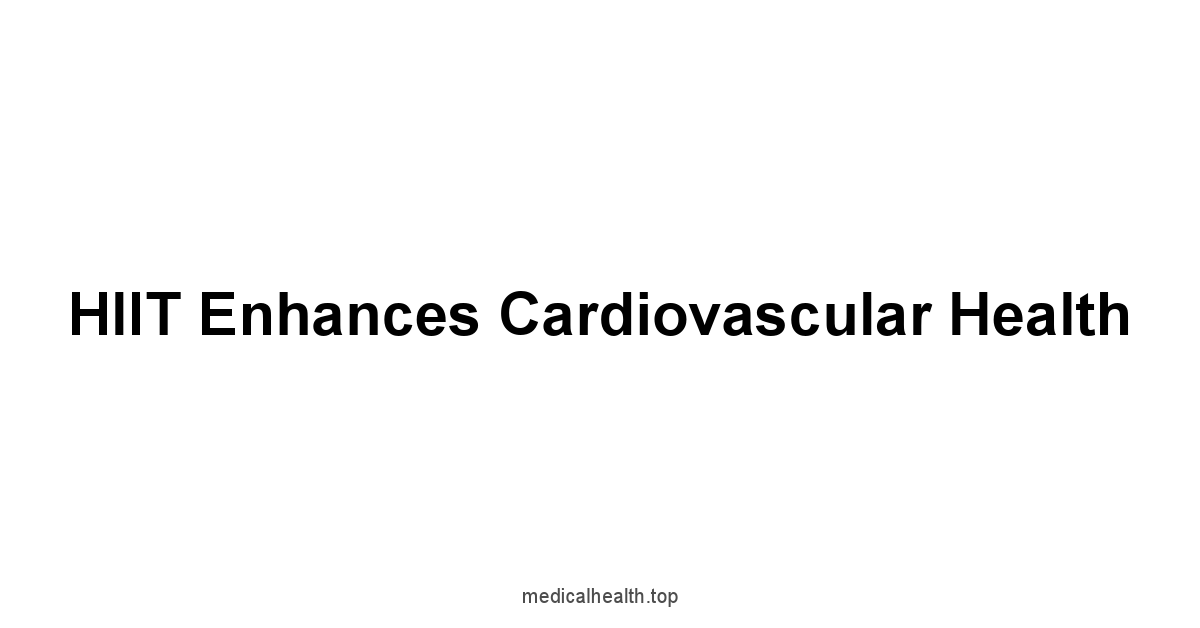
HIIT is not just about burning calories. It is also good for the heart.
It strengthens the heart muscle, improves blood flow, and increases your overall cardiovascular capacity.
It’s about making your heart stronger and more efficient. This is a key benefit of HIIT.
The way it challenges the heart during intense intervals leads to significant improvements.
It works because the intense bursts of effort make the heart work harder, which helps it grow stronger.
It’s like weightlifting for the heart, and like any muscle, the heart gets stronger when it is challenged.
These benefits go beyond just fitness and reduce the risk of heart disease and other health problems.
Strengthening the Heart
HIIT workouts strengthen the heart muscle.
The intense bursts of activity force the heart to pump more blood, making it work harder. This makes the heart stronger.
It’s like training any other muscle, the more you use it, the stronger it gets.
The way HIIT is structured puts the heart under pressure, which causes positive adaptations.
- Increased Stroke Volume: HIIT increases the amount of blood your heart pumps with each beat, known as stroke volume. A stronger heart pumps more blood with every contraction, making it more efficient.
- Heart efficiency: This increase in stroke volume means your heart doesn’t have to work as hard to circulate the same amount of blood.
- Reduced Resting Heart Rate: Over time, HIIT can lower your resting heart rate. A lower resting heart rate indicates a more efficient and stronger heart.
- Heart health: A lower resting heart rate is an indicator of good cardiovascular health.
- Myocardial Adaptation: The heart muscle itself adapts to the stress of HIIT, becoming thicker and stronger. This is beneficial for long-term heart health.
- Heart muscle growth: This adaptation improves the heart’s ability to pump blood effectively.
- Improved Cardiac Output: HIIT increases cardiac output, the amount of blood your heart pumps per minute. This improves oxygen delivery to the muscles and tissues.
- Improved circulation: A stronger heart can deliver more blood to your body faster, supporting improved performance.
- Preventative Benefits: By strengthening the heart, HIIT helps prevent heart disease and improves overall cardiovascular health. This makes HIIT more than just a workout. It’s an investment in your future health.
The impact of HIIT on the heart is significant.
It does not just make the heart stronger, it makes it more efficient.
This is beneficial for overall health and it reduces the risk of heart-related diseases.
Improving Blood Flow
HIIT improves blood flow throughout the body. It makes the blood vessels more efficient.
This is important for delivering oxygen and nutrients to the muscles.
Improved blood flow can also help remove waste products more efficiently.
It’s not just about the heart, it’s about the entire circulatory system.
The intense nature of HIIT workouts has a positive effect on blood flow.
- Vasodilation: HIIT promotes vasodilation, the widening of blood vessels. This reduces resistance to blood flow, making it easier for blood to circulate.
- Easier circulation: This means your heart does not have to work as hard to push blood through your body.
- Endothelial Function: HIIT improves the function of the endothelium, the lining of blood vessels. Healthy endothelium is crucial for blood flow and vessel flexibility.
- Vessel health: Improved endothelial function reduces the risk of blood clots and improves the overall health of the blood vessels.
- Capillary Density: HIIT increases capillary density in muscles. This means more small blood vessels are present in the muscles, which can improve oxygen delivery.
- Oxygen delivery: More capillaries in your muscles mean better oxygen and nutrient delivery, improving muscle performance.
- Reduced Blood Pressure: HIIT can lower blood pressure, especially in people with hypertension. This is due to improved blood flow and vessel health.
- Hypertension management: Lowering blood pressure reduces the risk of heart disease and stroke.
- Enhanced Nutrient Delivery: Improved blood flow allows for more efficient nutrient delivery to the tissues. This supports muscle repair and recovery. It allows the body to recover and adapt to the stress from the exercise.
The effect of HIIT on blood flow is comprehensive.
It improves blood vessel function, increases circulation, and lowers blood pressure.
These benefits are crucial for overall health and they support muscle recovery, making HIIT more than just a workout for the heart. It’s a workout for the entire circulatory system.
Boosting VO2 Max
VO2 max is a measure of how much oxygen your body can use during exercise. It’s a key indicator of cardiovascular fitness. HIIT is a very effective way to boost your VO2 max.
The way HIIT challenges the cardiovascular system leads to significant improvements in your ability to use oxygen.
It is an essential factor in endurance and overall fitness.
- Increased Oxygen Uptake: HIIT training increases your body’s capacity to take in and use oxygen during exercise. This is a crucial adaptation for endurance performance.
- Improved performance: Better oxygen uptake means you can exercise for longer and with more intensity without getting tired as fast.
- Enhanced Mitochondrial Function: HIIT improves the function of mitochondria, the powerhouses of your cells, which use oxygen to produce energy. This is a result of the stress placed on your body during the workouts.
- Cellular energy: Enhanced mitochondrial function means your muscles can work more efficiently.
- Improved Aerobic Capacity: HIIT helps to improve your aerobic capacity. This allows you to perform activities for longer periods. It is not just about the ability to do intense work, but also to sustain it.
- Longer activity: Better aerobic capacity means you can do daily activities and other forms of exercise without fatigue.
- Heart and Lung Efficiency: HIIT makes your heart and lungs more efficient at delivering oxygen to your muscles. This improvement is because the heart is pumping harder and your lungs are taking in more oxygen.
- Efficient system: An efficient heart and lung system makes it easier to perform strenuous tasks and physical activity.
- VO2 Max and Health: Increasing your VO2 max through HIIT is associated with a reduced risk of chronic diseases. It makes HIIT not just a method of fitness, but also an important element in preventative care.
The way HIIT enhances VO2 max is a significant benefit.
It increases oxygen uptake, improves cell function, and makes your heart and lungs more efficient.
All of this leads to better overall cardiovascular health and fitness.
It’s a key reason why HIIT is an effective way to improve your health.
HIIT Builds Muscle
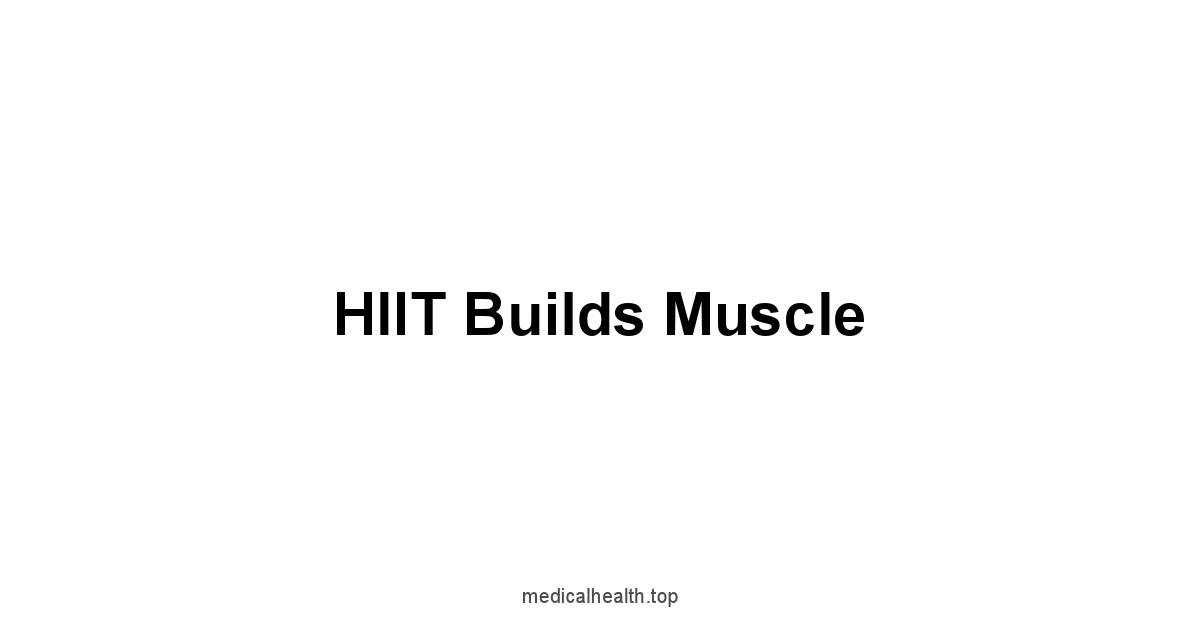
HIIT is not just for cardio. It can help build muscle.
The way the body responds to the intense bursts of effort stimulates muscle growth, and even if you are not lifting weights, you can still build some muscle.
It’s not going to be like weightlifting, but it is a way to add lean muscle.
HIIT workouts can also help maintain muscle mass while losing fat.
This is key to changing your body composition and improving overall health.
It’s not just about being fit, it’s also about building a better body.
The way HIIT affects muscle recruitment makes it effective for building muscle.
Muscle Fiber Recruitment
HIIT engages different types of muscle fibers.
The intense nature of the workouts forces your body to recruit more muscle fibers.
This is crucial for building strength and muscle mass.
It’s not just about working out, it’s about the specific way you recruit your muscles.
The way HIIT works means you’re using more of your muscles.
- Fast-Twitch Fibers: HIIT primarily recruits fast-twitch muscle fibers. These fibers are responsible for strength and power. They also grow more when they are challenged.
- Power and Strength: Engaging fast-twitch fibers leads to gains in both strength and power, which is important for athletic performance.
- Full Muscle Activation: The intensity of HIIT forces your muscles to work harder. This means you are using more of your muscles than with steady-state cardio. The recruitment of more muscle fibers is the key to muscle growth.
- More Efficient Workouts: Activating a greater number of muscle fibers means you get more out of your workouts, resulting in better results with less time.
- Muscle Growth Stimulation: The stress placed on muscles during high-intensity intervals stimulates muscle protein synthesis. This leads to muscle growth and repair, even if the workout is short.
- Muscle Protein Synthesis: Muscle protein synthesis is the process by which the body repairs and rebuilds muscle tissue, essential for growth and strength gains.
- Body Composition: By engaging more muscle fibers, HIIT helps build lean muscle mass while simultaneously burning fat. This is a crucial component of body recomposition.
- Lean Body Mass: Preserving lean muscle mass while losing fat results in a more toned and healthy body.
- Functional Strength: The way HIIT recruits muscle fibers leads to functional strength. It improves your ability to perform everyday tasks. The result is an improvement in overall physical ability.
Muscle fiber recruitment is a key to the effectiveness of HIIT for muscle building.
Engaging both slow and fast-twitch fibers makes the workout more effective and leads to muscle growth and increased strength.
Lean Muscle Mass
HIIT helps you build lean muscle mass.
This type of muscle is important for your overall health and metabolism.
It’s not bulky muscle, but strong, functional muscle.
Lean muscle helps burn more calories throughout the day.
It improves body composition, and reduces the risk of many chronic health problems.
- Muscle Preservation: While losing weight, HIIT helps preserve muscle mass. This is beneficial because muscle burns more calories than fat. The goal is to lose fat while maintaining muscle.
- Calorie Burning: Muscle burns calories even at rest, helping to increase the daily caloric expenditure.
- Improved Metabolism: Lean muscle mass increases your metabolism. This means you burn more calories even when you’re not exercising. It’s an important key to weight management.
- Metabolic Benefits: A higher metabolism makes it easier to maintain a healthy weight and prevent fat gain.
- Functional Strength: Building lean muscle improves functional strength. This is the ability to perform everyday activities easier. It’s not just for the gym; it’s for life.
- Daily Activities: Functional strength makes everyday tasks like carrying groceries and climbing stairs easier and less tiring.
- Body Toning: Lean muscle gives you a toned look. It helps you achieve a more sculpted appearance without bulking up. It changes the look of your body and improves your physique.
- Aesthetic Improvements: Lean muscle mass leads to a more toned, athletic physique.
- Health Benefits: Increased lean muscle mass is linked to better health outcomes. It reduces the risk of chronic diseases and improves overall physical health. It is important for both physical fitness and overall well-being.
The benefits of building lean muscle through HIIT are significant.
It improves metabolism, increases functional strength, and helps achieve a toned physique. It is important for both fitness and health.
It goes beyond just working out, it’s about improving your overall well-being.

HIIT and Strength Training
HIIT is not a replacement for strength training but it can complement it.
It can be used as a way to build some muscle, or as a way to improve your strength training routine.
The way it works also provides benefits for strength workouts.
It’s a different kind of muscle building, but it can improve your overall fitness.
- Complementary Approach: HIIT can be used in addition to strength training. It does not replace it but it can enhance it. HIIT can help improve your cardiovascular fitness for your strength workouts.
- Fitness Improvement: Improving cardiovascular health makes your strength training workouts more efficient.
- Muscle Endurance: HIIT enhances muscle endurance, which can improve performance in strength training sessions. More muscular endurance makes it easier to complete more sets or repetitions.
- Strength Workouts: More endurance can enhance your strength workouts, leading to more strength gains.
- Body Composition: HIIT helps reduce body fat. This can make your muscles more visible. It also improves overall body composition, making you stronger and leaner.
- Fat Reduction: Losing fat can make your muscles look more defined and improve overall strength results.
- Recovery Benefits: HIIT promotes blood flow. This helps with recovery from strength workouts by delivering nutrients to muscles and removing waste.
- Quicker Recovery: Improved blood flow can lead to faster recovery between strength training sessions, allowing for more frequent and effective workouts.
- Variety in Training: Adding HIIT to a strength training routine provides variety. It can prevent boredom and burnout. It also introduces new stimuli for the body.
- Training Versatility: Combining HIIT with strength training allows for a more rounded approach to fitness.
The combination of HIIT and strength training can be highly effective.
It improves cardiovascular fitness, enhances muscle endurance, and improves body composition.
It can also make strength training workouts more effective by improving recovery times and overall cardiovascular health. It is a balanced approach to fitness.
HIIT is Time-Efficient
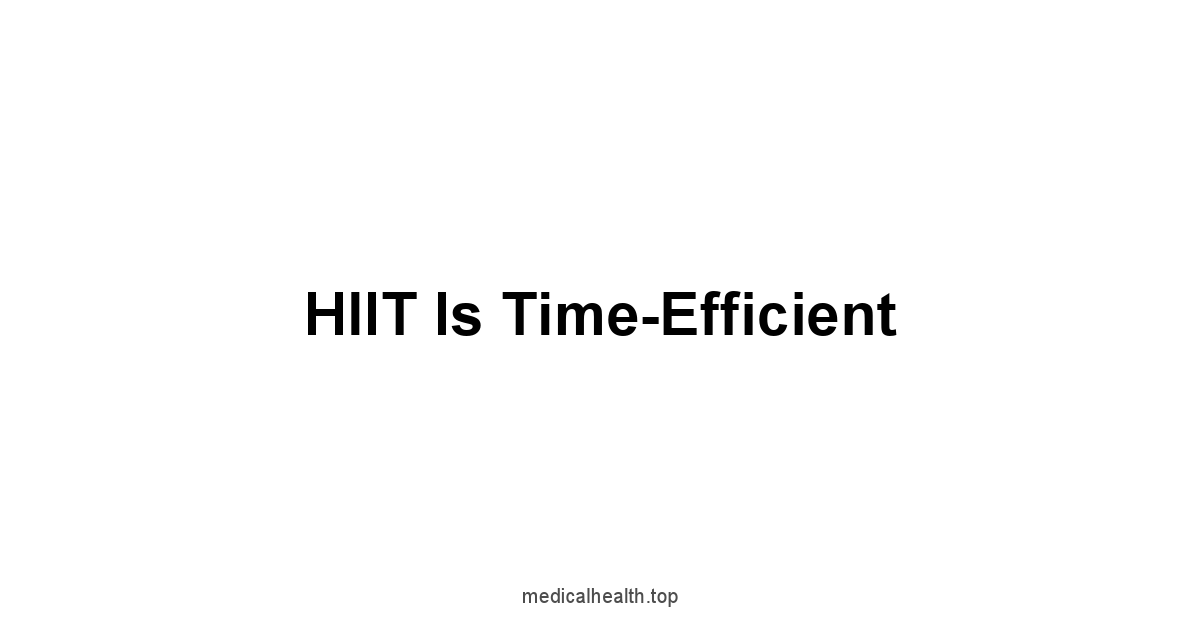
HIIT is a time-saving workout method. It’s not about spending hours at the gym. It’s about working hard for a short time.
This makes it a good option for those who have busy lives.
The intense nature of HIIT workouts means you get a lot done in a little time. It’s about maximum benefit in minimum time.
The main benefit of HIIT is that it is effective.
It can deliver the same results as longer, slower forms of exercise in less time.
This makes it an ideal choice for those who do not have a lot of time to spend working out. It’s a way to make fitness part of your busy day.
The Short Workout Advantage
The main advantage of HIIT is the short workout. You can get a good workout in 20-30 minutes. This is shorter than most other forms of exercise. This is useful for people who have busy lives. This is not about long hours in the gym. It’s about getting the job done quickly.
- Time-Saving: The main advantage is the time it saves. HIIT workouts can be as short as 10-15 minutes. This makes it easy to fit into a busy day. This can be very useful for people who find it hard to find the time for exercise.
- Quick Routines: This also allows people to quickly do the exercise, and get on with their days.
- Effective Results: Despite their short duration, HIIT workouts are very effective for fat loss, cardiovascular health, and muscle building. They deliver a lot of benefit in a small amount of time.
- High Efficiency: Because of its intensity, the workout is very efficient, getting the maximum result for the least time.
- Flexibility: Short workouts make it easier to be flexible. You can do it at the start or end of the day, or even at lunch break. This flexibility makes it easy to do regularly.
- Daily Scheduling: Short workouts can be easily fit into any type of daily schedule, which helps with consistency.
- No Gym Required: HIIT can be done anywhere. You can do a workout in your house, a park, or a hotel room. This saves even more time and allows more flexibility.
- Convenient Exercise: Being able to do it anywhere makes it more convenient and it reduces the need to spend extra time going to the gym.
- Mental Benefits: Even short bursts of HIIT can help reduce stress, improve mood, and boost your energy level. This makes it beneficial for both your body and mind.
- Mental Health Boost: Even a small workout can have a big impact on stress levels and mental health.
The short workout is a major reason for the appeal of HIIT.
It allows you to get the benefits of exercise without wasting a lot of time.
This makes it a good option for busy lives and it makes it easier to be consistent with your fitness routine.
Getting More From Less
HIIT is about getting more from less.
It’s about the intensity of the workout, not the duration.
You can get the same results as longer workouts with a short HIIT session. This makes it an efficient method of exercise. The focus is on working hard when you do workout.
- High-Intensity Focus: The focus of HIIT is high intensity. You are pushing your body as hard as you can for a short period, which makes the workout efficient.
- Maximum Output: Because the intensity is high, your body works harder, getting better results in less time.
- Efficient Calorie Burn: HIIT burns a lot of calories during and after the workout. This is more efficient than steady-state exercise for weight loss.
- Extended Calorie Burn: This means you are still burning calories long after the workout is finished.
- Time Efficiency: HIIT allows you to get the benefits of a longer workout in a fraction of the time. This is very convenient for people with busy schedules.
- Effective Scheduling: By taking less time, you are able to fit the exercise into your schedule without cutting into other important areas of your life.
- Multiple Benefits: HIIT improves cardiovascular health, burns fat, builds muscle, and boosts metabolism. All these benefits come in one short workout.
- Comprehensive Workout: The workout offers a comprehensive approach to fitness by including all the key areas of health and fitness.
- Practical Approach: This approach makes fitness more accessible. It allows anyone to get the benefits of exercise without having to sacrifice a lot of time.
- Accessibility: By making fitness accessible, more people will take part in exercise and receive the benefits of it.
The principle of getting more from less makes HIIT an efficient method.
It focuses on high intensity, which results in better results in less time.
It is a practical and accessible approach to fitness.
It makes it easier to be consistent with the workouts.
Fitting HIIT Into a Busy Life
HIIT is easy to fit into a busy life.
Because the workouts are short and can be done anywhere, it is easy to incorporate it into your daily schedule. It’s a flexible workout method.
It does not require a lot of time or equipment, making it a practical choice for those with busy lives.
- Short Workouts: HIIT workouts are short, so you can squeeze them into your schedule. It can be done in the morning, during a lunch break, or at the end of the day.
- Daily Schedule: This makes it easy to fit into even the busiest of daily schedules.
- No Gym Required: You don’t need a gym to do HIIT. It can be done at home, in a park, or while traveling. This adds to the flexibility of the workout and saves even more time.
- Workout Anywhere: Being able to do the workout from anywhere makes it more convenient.
- Adaptable Exercises: HIIT exercises can be adapted to any fitness level. You can modify the exercises to suit your needs, which makes it suitable for both beginners and advanced athletes.
- Personalized Workouts: You can always adapt the workout to match your current ability, meaning it will always be useful.
- Time Management: The short duration of HIIT means it does not take up too much time. It makes it easier to manage your time and make fitness a priority.
- Prioritizing Fitness: By being short, the workout makes it easier to include exercise without taking time from other parts of your life.
- Consistency: The ease and flexibility of HIIT make it easier to stay consistent with your fitness routine. Regular workouts are key to achieving long-term fitness goals.
- Regular Exercise: Consistency is a key component for better health, and the flexibility of HIIT makes it easy to remain consistent.
Fitting HIIT into a busy life is easy due to its flexibility and time-saving nature.
It can be done anywhere, anytime, and the workouts can be adapted to suit individual fitness levels.
It’s a practical approach to fitness for busy individuals.
HIIT Improves Insulin Sensitivity

HIIT is not just good for your heart and muscles, it also improves insulin sensitivity.
This is important for regulating blood sugar and preventing diabetes.
Improved insulin sensitivity means your body can use insulin more effectively.
It’s a key benefit of HIIT, and it contributes to better overall metabolic health.
The way HIIT affects blood sugar levels has many benefits for metabolic health.
It helps your body use insulin correctly and helps prevent blood sugar imbalances.
These benefits are important for anyone who wants to improve their metabolic health.
Blood Sugar Regulation
HIIT helps regulate blood sugar levels. It helps your body use insulin more effectively.
It’s an important benefit for preventing type 2 diabetes.
The way the body reacts to HIIT helps keep blood sugar at the correct levels.
This makes it an effective tool for managing blood sugar.
- Increased Insulin Sensitivity: HIIT increases your body’s sensitivity to insulin. This means your cells can use glucose more effectively, which reduces blood sugar levels.
- Better Glucose Use: By using glucose better, the body reduces the need for high levels of insulin.
- Reduced Blood Sugar Spikes: HIIT helps prevent blood sugar spikes after meals. It helps the body manage glucose efficiently, which keeps the blood sugar levels stable.
- Preventing Spikes: By preventing blood sugar spikes, it reduces the chance of developing type 2 diabetes.
- Glucose Uptake: HIIT increases glucose uptake by muscles, removing it from the bloodstream. This is a key aspect of managing blood sugar levels.
- Muscle Use: By using the glucose in your muscles, it lowers the amount of glucose in the blood.
- Improved Metabolic Health: By helping regulate blood sugar, HIIT leads to improved metabolic health. This is key for overall health and fitness.
- Metabolic Balance: By regulating blood sugar levels it allows for a better overall metabolic balance.
- Preventive Benefits: Better blood sugar regulation reduces the risk of developing type 2 diabetes and other metabolic disorders. It’s an important step in improving overall health.
The regulation of blood sugar through HIIT is a key benefit.
It improves insulin sensitivity, prevents blood sugar spikes, and leads to better metabolic health.
This makes HIIT an effective method for preventing metabolic disorders.
Reducing Diabetes Risk
HIIT can help reduce the risk of type 2 diabetes.
It improves insulin sensitivity and helps regulate blood sugar, which are key factors in preventing the disease.
It’s not just about managing the disease, it’s also about preventing it.
The way HIIT works makes it an important tool in preventative health.
- Improved Insulin Function: HIIT improves how the body uses insulin. This reduces the risk of insulin resistance, which is a main factor in type 2 diabetes.
- Insulin Sensitivity: By improving insulin sensitivity, the body can more efficiently use insulin to regulate blood sugar.
- Blood Sugar Control: HIIT helps control blood sugar levels. This is key to preventing the spikes that can lead to diabetes.
- Stable Blood Sugar: By keeping blood sugar levels stable, it reduces the risk of long-term problems.
- Weight Management: HIIT helps with weight loss and weight management, which can reduce the risk of diabetes. Obesity is a major risk factor for type 2 diabetes, so losing weight can lower that risk.
- Weight Control: Maintaining a healthy weight is a key step in reducing the risk of developing diabetes.
- Reduced Inflammation: HIIT can reduce inflammation in the body. Chronic inflammation can lead to insulin resistance and diabetes, so reducing it is crucial.
- Inflammation Reduction: By reducing inflammation, it also reduces the risk of a host of other problems.
- Preventative Approach: HIIT is a preventive measure against type 2 diabetes. This makes it a vital part of a healthy lifestyle, especially for people who have a family history of the disease.
The ability of HIIT to reduce the risk of type 2 diabetes is important.
It improves insulin function, controls blood sugar, helps with weight management, and reduces inflammation.
It makes HIIT a preventive method and a part of a healthy lifestyle.
Metabolic Health Benefits
HIIT offers a range of metabolic health benefits.
It is not just about blood sugar and insulin sensitivity, it also affects other metabolic factors.
The way HIIT affects the body has several positive implications for overall metabolic health.
This makes it a good choice for people who want to improve their health.
- Improved Lipid Profile: HIIT can improve your lipid profile. It helps lower bad cholesterol LDL and increase good cholesterol HDL. This is important for preventing heart disease.
- Heart Health: By improving your lipid profile, you improve your heart health.
- Increased Metabolism: HIIT boosts your metabolism, allowing you to burn more calories throughout the day. This is important for weight management and preventing metabolic disorders.
- Calorie Burn: By boosting the metabolism, you are able to burn more calories even when not working out.
- Enhanced Mitochondrial Function: HIIT improves how your mitochondria work, which are the powerhouses of your cells. More efficient mitochondria helps the body work better.
- Cellular Energy: By making the mitochondria work better, you are improving the overall cellular health.
- Reduced Inflammation: HIIT helps reduce inflammation, which can improve metabolic health. Inflammation can cause many different health problems.
- Inflammation Control: Reducing inflammation is vital for overall health.
- Better Overall Health: The combination of all the metabolic benefits makes HIIT an effective way
Final Verdict
The takeaway is clear: HIIT is not just another fitness fad.
It’s a practical method for those who want results without spending endless hours at the gym. The science backs it up.
Studies consistently show that HIIT is effective for burning calories, losing fat, enhancing cardiovascular health, and even building muscle.
It’s a way to get more from less, a concept that makes sense to anyone who is pressed for time but values their health.
The benefits are not limited to just physical changes, it also has a profound impact on metabolic health.
What you are getting with HIIT is not just a workout, but a way to improve your overall well-being.
You are strengthening your heart, improving blood flow, and boosting your VO2 max, all in the same session.
It’s a method that challenges your body, but also rewards it.
You get the afterburn effect, which extends the calorie burning even after you are done.
It’s about making your body more efficient, which means it works better for you.
You are not just burning calories while you are exercising, but also throughout your day.
And then you consider the muscle-building aspect.
It is not a replacement for strength training, but it does recruit muscle fibers and help you build lean muscle mass.
This leads to a more toned physique and helps to increase your metabolism.
It’s about changing your body composition, not just losing weight.
The best part is that it’s all done in a time-efficient way.
You do not need to spend hours to make these changes.
You can fit HIIT into a busy schedule without making too many changes to your daily life.
So, consider giving HIIT a try, if you are looking for a way to improve your fitness, your body, and your health.
It’s not about a quick fix but a method that provides lasting benefits.
It is a balanced approach to fitness that combines the benefits of cardio and strength training, without asking for too much time.
If you have got a busy life, but value your health, it might just be the right choice.
Frequently Asked Questions
What exactly is HIIT?
HIIT, or High-Intensity Interval Training, is a way to work out. You go hard for a short time, then rest. Then you do it again. It’s bursts of effort with breaks in between. Think of sprints and walks, back and forth. Simple, but it gets the job done.
How does HIIT work?
It’s a cycle. You push hard, then you recover. You’re not running a marathon.
You’re doing short sprints with recovery in between. It’s about changes in pace.
You go all out for a short interval, then you rest, and repeat.
What are work and rest intervals?
Work intervals are when you go hard. Like sprinting or jumping. It might be 20 seconds, or a minute. Rest intervals are when you recover. You might walk, or just stop. The ratio between work and rest matters. It is not random. It determines the intensity of the workout.
What does a HIIT workout look like?
It starts with a warm-up. Then the high-intensity intervals. Then a cool-down. The warm-up gets you ready. The intervals challenge you. The cool-down brings you back down. It’s about preparation, work, and recovery.
How does HIIT burn calories?
It burns calories fast. It’s not a slow burn. It’s a high-intensity blaze. And it keeps burning calories after the workout. This is the afterburn.
Your body continues to work hard, even when you stop.
What is the afterburn effect?
The afterburn, or EPOC, is when your body keeps burning calories after the workout.
It takes time for your body to recover after pushing hard. This uses extra calories. It can last for hours after the workout.
Does HIIT help with fat loss?
Yes. It targets fat stores, not just overall weight. It helps you lose fat while keeping your muscles. It changes your body composition. It makes you leaner.
Why is HIIT so efficient?
It gets you a lot of benefit in a short time. You work hard for a few minutes. It’s not about long hours in the gym. It’s about maximum results with minimum time.
How does HIIT help my heart?
It strengthens it. The intense bursts make the heart work harder. Like any muscle, it gets stronger. It improves blood flow.
It also increases your overall cardiovascular capacity.
What does HIIT do for blood flow?
It makes your blood vessels more efficient. This helps deliver oxygen to your muscles. It also helps remove waste products.
It’s not just about the heart, it’s about the entire system.
What is VO2 max?
It’s how much oxygen your body can use during exercise. HIIT is a good way to improve it. It’s an indicator of fitness. The more oxygen you can use, the better.
Does HIIT build muscle?
Yes, it can.
It’s not like weightlifting, but it stimulates muscle growth.
And it helps you keep your muscle while you lose fat.
It’s not just about cardio, it’s also about building a better body.
What are fast-twitch muscle fibers?
They are the fibers responsible for strength and power. HIIT recruits these fibers. This is key for muscle growth and strength.
It’s about using more of your muscles during the workout.
Can HIIT replace strength training?
No, it’s different. But it can complement it.
It can help your strength workouts by improving your fitness.
It is a different way of building muscle but they work well together.
How long are HIIT workouts?
They are short. Usually 20-30 minutes. Sometimes as short as 10 minutes. This makes it good for busy people. It’s not about spending hours at the gym.
Can I do HIIT anywhere?
Yes. You don’t need a gym.
You can do it at home, in a park, or when traveling. This makes it easier to fit into a busy life. It’s about being flexible with your routine.
How does HIIT improve insulin sensitivity?
It helps your body use insulin better.
This is important for controlling blood sugar and preventing diabetes. It’s about making your body more efficient.
Does HIIT reduce the risk of diabetes?
Yes.
It improves insulin sensitivity and helps regulate blood sugar.
It’s not just about managing the disease, it’s also about preventing it. It’s a tool for preventative health.
What other metabolic benefits does HIIT provide?
It improves your lipid profile, boosts your metabolism, and reduces inflammation. It is also about better overall metabolic health. It is good for both fitness and health.
